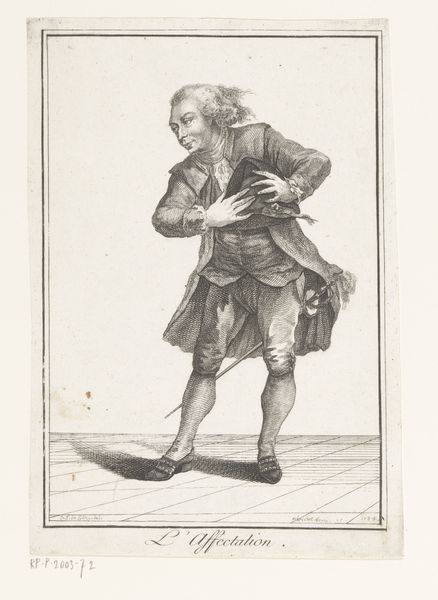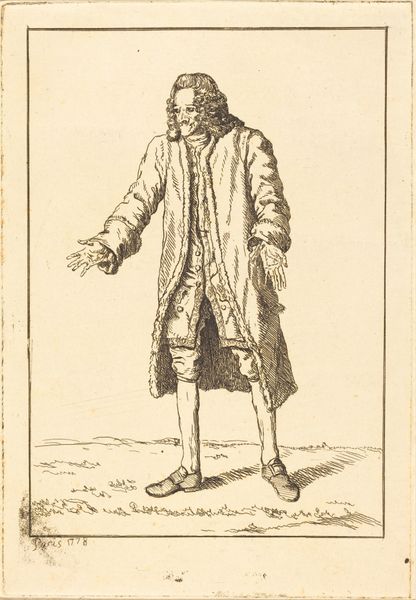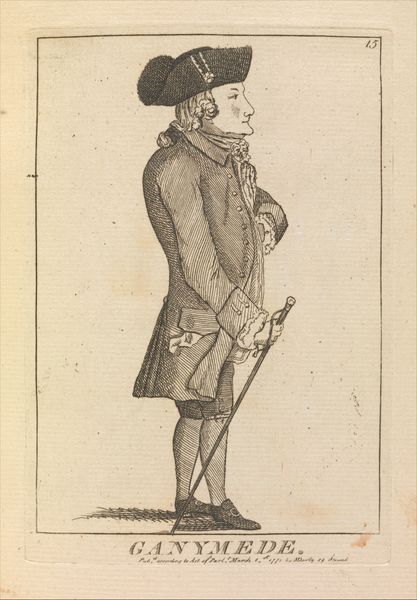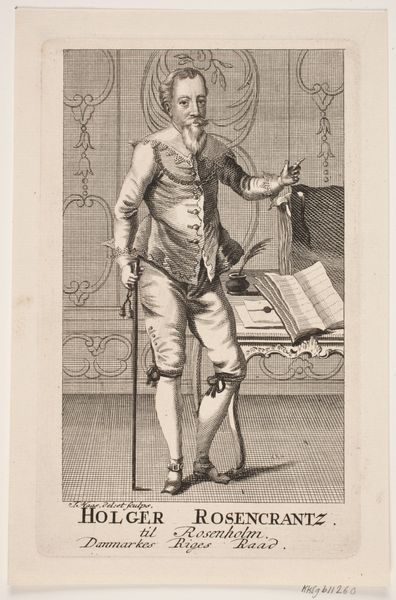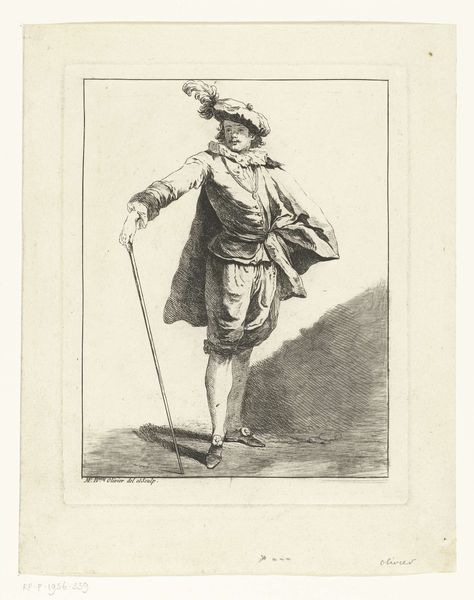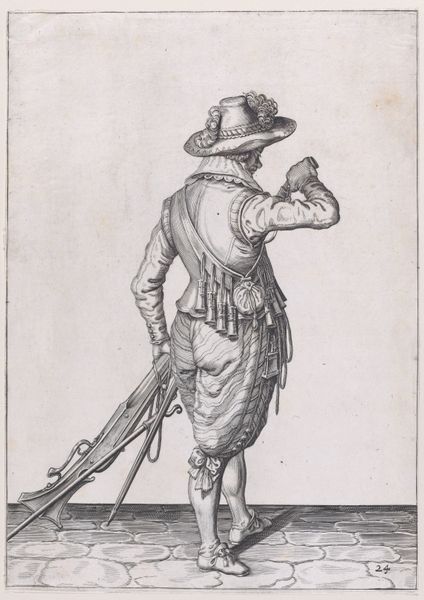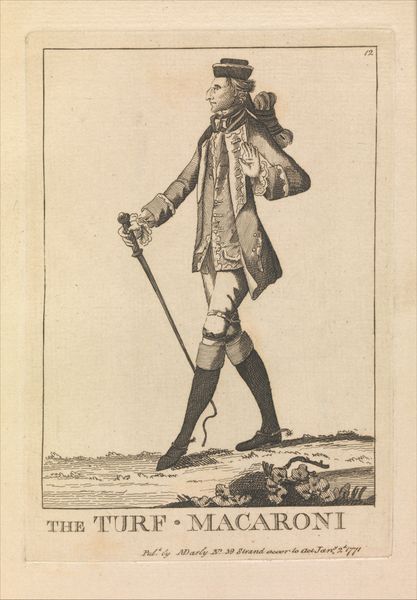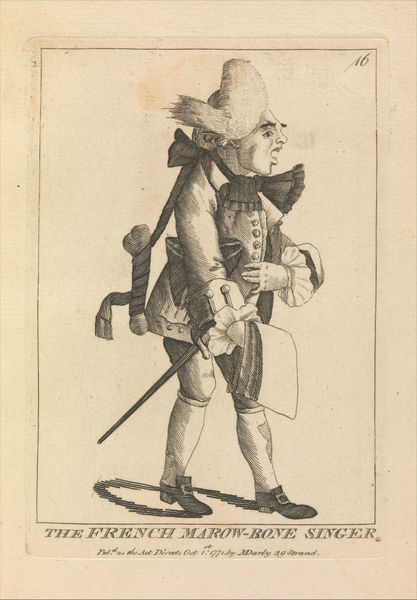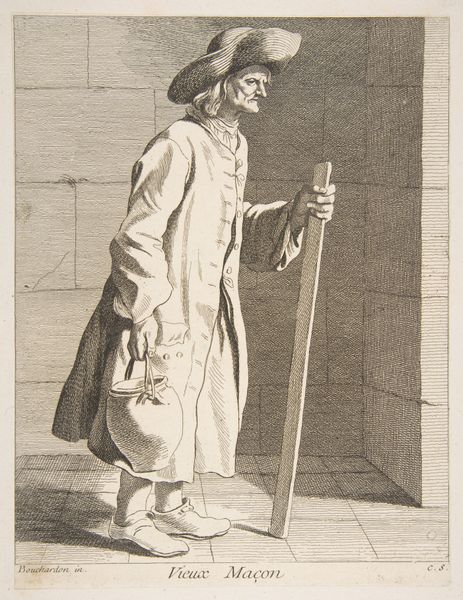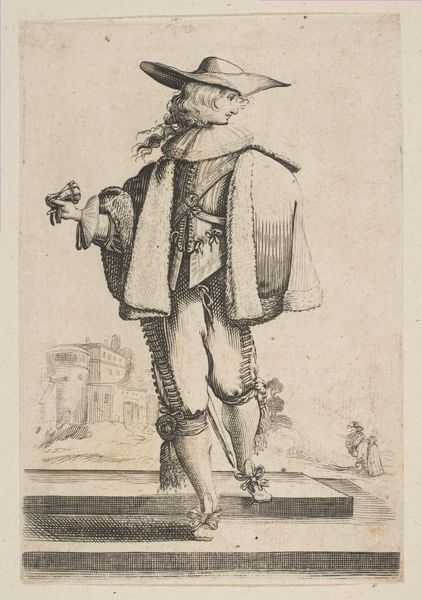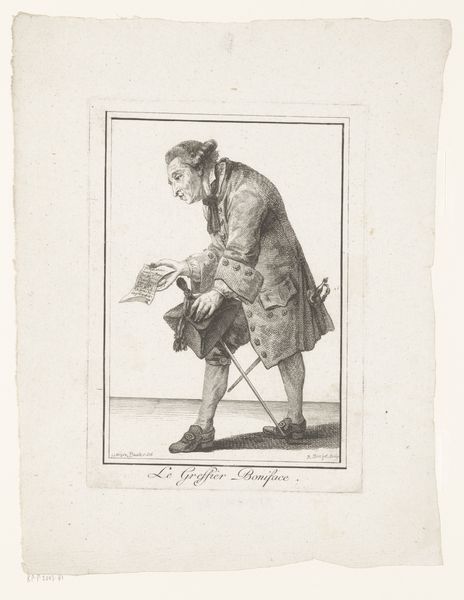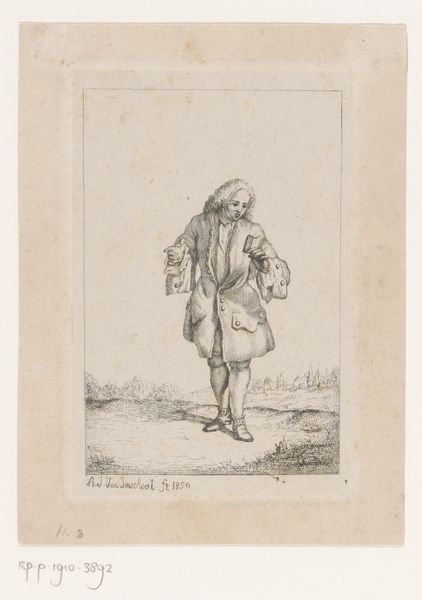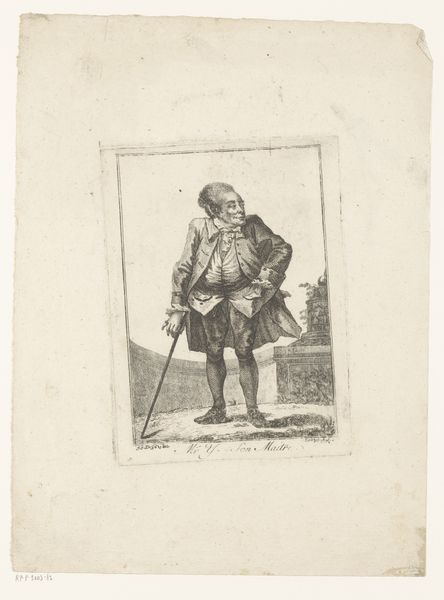
etching, engraving
#
portrait
#
neoclacissism
#
etching
#
caricature
#
genre-painting
#
engraving
Dimensions: height 227 mm, width 162 mm
Copyright: Rijks Museum: Open Domain
Editor: We’re looking at “Man with Walking Stick on a Tiled Floor,” an etching and engraving by Robert Brichet from 1784. I’m struck by the almost arrogant tilt of his head, and the way the floor tiles seem to recede endlessly behind him. What do you see in this piece, looking at it through a critical lens? Curator: Well, first, let's consider the title, specifically "Le Chicaneur" written below the image; Chicaneur implies someone argumentative and prone to legal quibbling. Combined with the exaggerated features – the puffy face, the upturned nose – we're not just seeing a portrait, but a social commentary. How does this relate to the social and political climate of pre-Revolutionary France? Editor: It’s definitely poking fun, right? The man's posture and the implication that he's a troublemaker, it suggests a critique of the privileged classes. Is there more to it? Curator: Absolutely. Neoclassicism, though often associated with elevated subjects, was also used for satire. Consider the power dynamics at play. Brichet is using caricature, a tool often employed to critique authority and expose societal flaws. Who held the power and who was the object of this gentle ridicule, and how do those factors reflect the artist's position in society? What do you make of the sword that hangs low to his side? Editor: The sword feels like it’s meant to give a false impression of being someone to be feared, when in fact he looks more pompous and self-important than dangerous. A symbol of hollow power. Curator: Precisely! So, we move beyond just a humorous image and enter into a nuanced commentary on class, power, and the crumbling social structures that preceded the French Revolution. A single image can hold such depth of meaning if we examine its roots. Editor: This was great! I’m now thinking about how seemingly simple images can reveal a great deal about the period they come from.
Comments
No comments
Be the first to comment and join the conversation on the ultimate creative platform.
